Haidt y Gigerenzer: la decisión moral como respuesta automática
DOI:
https://doi.org/10.25057/25005731.776Palabras clave:
decisión moral, intuición, razonamiento estratégico, racionalidad limitadaResumen
Este artículo de revision tiene el objetivo de discutir dos modelos naturalistas contemporáneos que se aproximan a explicar la decisión moral como respuesta automática: la propuesta de Jonathan Haidt y
la de Gerd Gigerenzer. Las propuestas explicativas de Haidt y Gigerenzer resaltan el papel de la intuición y la emoción en las decisiones morales. De tal forma que estos procesos automáticos son ubicuos en
las decisiones cotidianas, constituyen un recurso para enfrentar la incertidumbre y sesgan la deliberación para tomar una decisión moral. Sin embargo, ambos autores restan importancia, en sus propuestas
explicativas, al uso que puede tener la deliberación para cuestionar e incorporar nuevos automatismos en la decisión moral.
Referencias bibliográficas
Antony, L. (2000). Naturalized Epistemology, Morality, and the Real World. In: Campbell, R., and Hunter, B. (Eds.), Moral Epistemology Naturalized (pp.103-138). The Canadian Journal of Philosophy. University of Calgary Press.
Babbitt, S. (2000). Moral Naturalism and the Normative Question. In: Campbell, R., and Hunter, B. (Eds.), Moral Epistemology Naturalized (pp.139-174). The Canadian Journal of Philosophy. University of Calgary Press.
Barg, J., & Chartrand, T. (1999). The Unbearable Automaticity of Being. American Psychologist, 54(7), 462-479. Recuperado de http://dx.doi.org/10.1037/0003-066X.54.7.462
Bartels, D. (2008). Principled moral sentiment and the flexibility of moral judgment and decision making. Cognition, 108(2), 381-417. doi:10.1016/j.cognition.2008.03.001
Bartels, D., Bauman, C., Cushman, F., Pizarro, D., and McGraw, P. (2015). Moral Judgment and Decision Making. In Keren, G., and Wu, G. (Eds.), The Wiley Blackwell Handbook of Judgment and Decision Making (pp.1-51). Chichester, UK: Wiley.
Camps, V. (2013). Breve historia de la ética. Barcelona: RBA Libros S.A
Cela, C. (1999). Del naturalismo contemporáneo. De Darwin a la sociobiología. En: Camps, V. (Ed.), Historia de la ética. iii. La ética contemporánea (pp.601-634). Barcelona: Crítica.
Chang, R. (2009). Voluntarist reasons and the sources of normativity. In: Sobel, D., and Wall, S. (Eds.), Reasons for action (pp.243-271). Cambridge: Cambridge University Press.
Chang, R. (2012). Are hard choices cases of incomparability? Philosophical Issues. Action Theory, (22), 106-126. Recuperado de http://ruthchang.net/wp-content/uploads/2012/11/PAre-Hard-Choices-cases-of-incomparability.pdf.
Churchland, Patricia S. (2006). Moral decision-making and the brain. In: Illes, J. (Ed.), Neuroethics. Definning the issues in theory, practice and policy (pp.3-16). Oxford: Oxford University Press.
Churchland, Patricia S., & Suhler, C. (2014). Agency and Control: The Subcortical Role in Good Decisions. In: Sinnott-Armstrong, W. (Ed.), Moral Psychology. Free Will and Moral Responsibility. 4, (pp.309-326). MIT Press: Massachusetts Institute of Technology.
Churchland, P. (2012). El cerebro moral. Lo que la neurociencia nos cuenta sobre la moralidad. Barcelona: Paidós.
Damasio, A. (1999). El error de Descartes. La razón de las emociones. Barcelona: Editorial Andres Bello.
Damasio, A. (2007). En busca de Spinoza. Neurobiología de la emoción y los sentimientos. Barcelona: Crítica.
Damasio, D. (2010). Y el cerebro creó al hombre. ¿Cómo pudo el cerebro generar emociones, sentimientos, ideas y el yo? Barcelona: Ediciones Destino, S.A.
Dennett, D. (2004). La evolución de la libertad. Barcelona: Ediciones Paidós Ibérica, S.A.
Dennett, D. (2007). Romper el hechizo. La religión como fenómeno natural. Barcelona: Katz Editores.
De Waal, F. (2007). Primates y filósofos. La evolución de la moral del simio al hombre. Barcelona: Ediciones Paidós Ibérica.
Driver, J., Loeb, D. (2008). Moral heuristics and consequentialism. In: Sinnott-Armstrong, W. (Ed.), Moral Psychology. 2. The Cognitive Science of Morality: Intuition and Diversity (pp.31-40). Cambridge: The MIT Press.
Gigerenzer, G. (2008a). Rational for Mortals. How People Cope with Uncertainty. Oxford: Oxford University Press.
Gigerenzer, G. (2008b). Decisiones instintivas. La inteligencia del inconsciente. New York: Penguin Group.
Gigerenzer, G. (2008c). Moral intuition. Fast and frugal heuristics? In: Sinnott-Armstrong, W. (Ed.), Moral Psychology. 2. The Cognitive Science of Morality: Intuition and Diversity (pp.1-26). Cambridge: The MIT Press.
Gigerenzer, G. (2008d). Reply to comments. In: Sinnott-Armstrong, W. (Ed.), Moral Psychology. 2. The Cognitive Science of Morality: Intuition and Diversity (pp.41-46). Cambridge: The MIT Press.
Gigerenzer, G. (2010). Moral Satisficing: Rethinking Moral Behavior as Bounded Rationality. Topics in Cognitive Science, 2(3), 528-554. doi: 10.1111/j.1756-8765.2010.01094.x.
Gigerenzer, G., & Sturn, T. (2012). How (far) can rationality be naturalized? Synthese, 187(1), 243-268. doi 10.1007/s11229-011-0030-6.
Greene, J. (2013). Moral Tribes. Emotion, Reason and The Gap Between Us and Them. New York: The Penguin Press.
Greene, J., & Haidt, J. (2002). How (and where) does moral judgment work? Trends in Cognitive Sciences, 6(12), 517-523. doi: http://dx.doi.org/10.1016/S1364-6613(02)02011-9.
Haidt, J. (2001). The emotional dog and its rational tail: A social intuitionist approach to moral judment. Psychological Review, 108(4), 814-834. doi:10.1037//0033-295X. 108.4.814.
Haidt, J. (2006). La hipótesis de la felicidad. La búsqueda de verdades modernas en la sabiduría antigua. Barcelona: Editorial Gedisa, S.A.
Haidt, J. (2007). The new synthesis in moral psichology. Science, 316, 998-1002. doi: 10.1126/science.1137651.
Haidt, J. (2012). The righteous mind. Why good people are divides by politics and religion. New York: Vintage Books.
Haidt, J., & Joseph, C. (2008). The moral mind: How five sets of innate intuitions guide the development of many culture-specific virtues, and perhaps even modules. In: Carruthers, P., Laurence, S., Stich, S., (Eds.), The innate mind. Foundations and the future. Evolution and cognition, 3 (pp.367-391). New York: Oxford University Press.
Haidt, J., & Bjorklund, F. (2008a). Social Intuitionists Answer Six Questions about Moral Psychology. In: Sinnott-Armstrong, W. (Ed.), Moral Psychology, 2. The Cognitive Science of Morality: Intuition and Diversity (pp.181-218). Cambridge: The MIT Press.
Haidt, J., & Bjorklund, F. (2008b). Social Intuitionists Reason, in Conversation. In: Sinnott-Armstrong, W. (Ed.), Moral Psychology, 2. The Cognitive Science of Morality: Intuition and Diversity (pp.241-254). Cambridge: The MIT Press.
Haidt, J., & Kesebir, S. (2008). In the Forest of Value: Why Moral Intuitions Are Different from Other Kinds. In: Plessner, H., Betsch, C., & Betsch, T. (Eds.), Intuition in Judment and Decision Making (pp.209-230). New York: Taylor & Francis Group.
Hershberger, J. (2014). Reason, Society, and the Social Intuitionist Model. Compos mentis: Undergraduate Journal of Cognition and Neuroethics, 2(2), 29-43. Recuperado de http://www.cognethic.org/cm/cmv2i2_Hershberger.pdf.
Hume, D. (2014). Investigación sobre los principios de la moral. Prólogo, traducción y notas de Carlos Mellizo. An Inquiring Concerning The Principles of Morals. 1751. Alianza Editorial.
Illiev, R., Sachdeva, S., Bartels, D., Joseph, C., Suzuki, S., and Medin, D. (2009). Attending to Moral Values. In Bartels, D., Bauman, C., Skitka, L., & Medin, D. (Eds.), Moral Judgment and Decision Making (pp.169-192). Oxford: Elsevier’s Science & Technology Rights Department.
Jacobson, D. (2008). Does social intuitionism flatter morality or challenge it? In: Sinnott-Armstrong, W. (Ed.), Moral Psychology, 2. The Cognitive Science of Morality: Intuition and Diversity (pp.219-232). Cambridge: The MIT Press.
Kahneman, D. (2012). Pensar rápido, pensar despacio. Barcelona: Random House Mondadori, S.A.
Koorsgard, C. (2004). Actuar por una razón. Anuario Filosófico, xxxvii(3), (645-677). Recuperado de http://dadun.unav.edu/bitstream/10171/4577/1/KORSGAARD.
pdf.
Koorsgard, C. (2007). La moralidad y la singularidad de la condición humana. De Waal, F. (Ed.), Primates y filósofos. La evolución de la moral del simio al hombre (pp.131-154). Barcelona: Ediciones Paidós Ibérica.
Kruglanski, A., & Gigerenzer, G. (2011). Intuitive and Deliberate Judgments Are Based on Common Principles. Psychological Review, 118(1), (97-109).
León, O. (1987). La toma de decisiones individuales con riesgo desde la psicología. Infancia y Aprendizaje, 30, (81-94). Recuperado de https://dialnet.unirioja.es/servlet/articulo?codigo=65980.
Narvaez, D. (2008). The Social-Intuitionist Model: Some Counter-Intuitions. In Sinnott-Armstrong, W. (Ed.), Moral Psychology, 2. The Cognitive science of
morality: Intuition and diversity (pp.233-240). Cambridge: The MIT Press.
Nussbaum, M. (1995). El discernimiento de la percepción: una concepción aristotélica de la racionalidad privada y pública. Estudios de Filosofía (Instituto de Filosofía de la Universidad de Antioquia), 11, 107-167. Recuperado de http://philpapers.org/rec/NUSEDD-2.
Nussbaum, M. (2008). Paisajes del pensamiento. La inteligencia de las emociones. Barcelona: Ediciones Paidós Ibérica, S.A.
Pena, J. (2005). El problema de la racionalidad en economía o las inconsistencias del Homo oeconomicus. Estudios Filosóficos (Valladolid), 155(54), (33-58). Recuperado de https://dialnet.unirioja.es/servlet/articulo?codigo=1112590.
Pizarro, D., & Bloom, P. (2003). The Intelligence of the Moral Intuitions: Comment on Haidt (2001). Psychological Review, 110(1), (193-196). Recuperado de http://dx.doi.org/10.1037/0033-295X.110.1.193.
Prinz, J. (2007). The Emotional Construction of Morals. Oxford: Oxford University Press.
Prinz, J., & Nichols, S. (2010). Moral Emotions. In: Doris J., and The Moral Psychology of Moral Group (Eds.), The Moral Psychology Handbook (pp.111-146). Oxford: Oxford University Press.
Sadler-Smith, E. (2008). Inside Intuition. London: Routledge Taylor & Francis Group.
Suhler, C., & Churchland, P. (2011). Can Innate, Modular “Foundations” Explain Morality? Challenges for Haidt´s Moral Foundations Theory. Journal of Cognitive Neuroscience, 239, (2103-2116). doi: 10.1162/jocn.2011.21637.
Sunstein, C. (2005). Moral Heuristics. Behavioral and Brain Sciences, 28(4), (531-573). Recuperado de http://www.ncbi.nlm.nih.gov/pubmed/16209802.
Sunstein, C. (2008). Fast, frugal, and (sometimes) wrong. In: Sinnott-Armstrong, W. (Ed.), Moral Psychology, 2. The Cognitive Science of Morality: Intuition and Diversity (pp.27-30). Cambridge: The MIT Press.
Smith, A. (2012). Teoría de los sentimientos morales. Selección y traducción de Raúl Meléndez Acuña. Medellín: Editorial Universidad de Antioquia.
Taleb, N. (2011). El Cisne Negro. El impacto de lo altamente improbable. Barcelona: Paidós Trancisiones.
Tiberius, V. (2015). Moral Psychology. A Contemporary Introduction. New York: Routledge. Taylor & Francis Group.
Tomasello, M. (2014). A natural history of human thinking. Cambridge: Harvard University Press.
Turiel, E. (2006). Thought, emotions, and social interactional procesess in moral development. In: Killen, M., and Smetana, J. (Eds.), Handbook of moral development (pp.7-36). New Jersey: Lawrence Erlbaum Associates, Inc.
Wilson, T. (2002). Strangers to ourselves. Discovering the adaptive unconscious. Cambridge: Harvard University Press.
Cómo citar
Descargas
Lenguajes:
esDescargas
Publicado
Número
Sección
Licencia
Las opiniones contenidas en los artículos son responsabilidad de sus autores.
Katharsis autoriza la reproducción de los artículos siempre y cuando se mencione la fuente.
| Estadísticas de artículo | |
|---|---|
| Vistas de resúmenes | |
| Vistas de PDF | |
| Descargas de PDF | |
| Vistas de HTML | |
| Otras vistas | |




